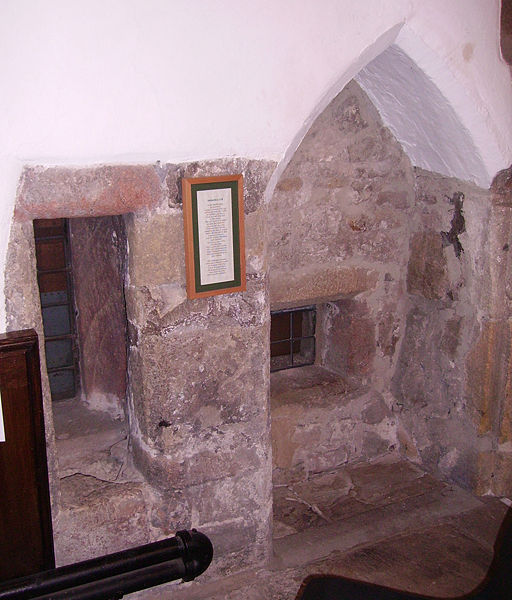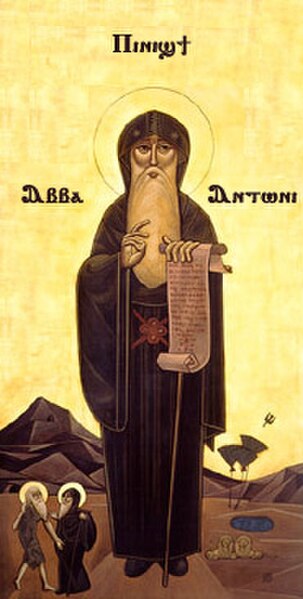Hilarion the Great (291–371) was an anchorite who spent most of his life in the desert according to the example of Anthony the Great (c. 251–356). While Anthony is considered to have established Christian monasticism in the Egyptian Desert, Hilarion is considered by some to be the founder of Palestinian monasticism and venerated as a saint by the Orthodox and the Roman Catholic Church.
Hilarion the Great, by Basil II, c.1000 (Vatican Library)
"The Temptation of Saint Hilarion", by Octave Tassaert, c.1857 (Montreal Museum of Fine Arts)
In Christianity, an anchorite or anchoret is someone who, for religious reasons, withdraws from secular society to be able to lead an intensely prayer-orientated, ascetic, or Eucharist-focused life. Anchorites are frequently considered to be a type of hermit, but unlike hermits, they were required to take a vow of stability of place, opting for permanent enclosure in cells often attached to churches. Also unlike hermits, anchorites were subject to a religious rite of consecration that closely resembled the funeral rite, following which they would be considered dead to the world and a type of living saint. Anchorites had a certain autonomy, as they did not answer to any ecclesiastical authority apart from bishops.
Anchorite's cell in Holy Trinity Church, Skipton
Christina Carpenter was walled in to a cell in St James's Church in Shere, Surrey.
The Anchorite (1881), by Teodor Axentowicz
Anthony the Great, father of Christian Monasticism and early anchorite. The Coptic inscription reads ' Ⲡⲓⲛⲓϣϯ Ⲁⲃⲃⲁ Ⲁⲛⲧⲱⲛⲓ' or 'The Great Father Anthony'.






